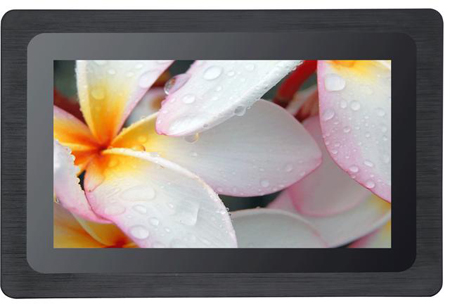The monitor belongs to the I/O equipment of the computer, refers to input/output equipment, which is a display tool that reflects certain electronic files on the display screen of specific transmission equipment and then reflects human eyes. It can be divided into CRT, LCD, and other types.
Considering the different application requirements and use environment, the monitor is constantly upgrading and changing. The display precision and clarity are gradually improved, and the RGB color field is more and more extensive.
These are the dominant features of commercial-grade monitor, which are widely
used in daily applications.
While for industrial-grade displays, the requirements for project deployment
are not as simple as high definition and high pixel. It involves a more
realistic environment, such as power consumption, current, wide voltage, static
electricity, dustproof, waterproof, anti-scratch, water vapor atomization,
highlight, contrast, visual angle, etc.
In this article, we will introduce the highlight of industrial display and
how to avoid water mist on the outdoor environment screen with large temperature
difference?

Due to most flat panel displays are used in the indoor environment, the
brightness is about 250-300 CD / m2 (NIT), however, this kind of brightness
level display can not meet the requirements when used in the industrial environment,
because the ambient light is stronger, and its brightness is easy to exceed the brightness of LCD backlight. In the medical, industrial, and public kiosk
applications, the required brightness should be at least 450 CD / m2, or even
higher.
The brightness and contrast of the high brightness monitor is 2.5 times that
of the normal monitor. In the outdoor environment with sufficient light, the
display screen can reach a certain brightness so that the operator can clearly
watch the display screen; In the dim scene, the display screen reduce the
brightness to adapt to the surrounding light, and avoid stimulating the human
eye.

In the outdoor use scene, the application of the display will change with
time and the light will be auto-adjusted by itself to adapt to the surrounding
light intensity, so as to better serve the human eyes and capture the content on
the display without being affected by the light.
The self-adjustment of display brightness is the protection of the device
itself.
As an electronic device, some monitors will burn out due to long-term work.
Therefore, from the perspective of maintenance, when it is not in use, it's necessary to turn it off or reduce the brightness. Otherwise, it will lead to internal burnout or aging after a long time. Once this damage occurs, it is permanent and irreparable. In addition, if the same content is displayed continuously for a long time, some LCD pixels will overheat, and then burn out the internal components. So the self-adjusting brightness of the display screen, to a certain extent, can better protect the monitor and prolong its service life.
This is one of the advantages of auto-adjustment brightness for industrial
monitor.

Industrial touch screen monitors have a wide range of application scenarios,
and the use environment is complex and changeable, which requires a high
environmental adaptability to keep reliable and stable operation under harsh
all-weather conditions. Besides, both the components and screen have limited
span-life, these external conditions will accelerate the aging speed of the
display.
The water mist problem of the display screen in the outdoor environment is caused by
the display material, structure, and environment change. When the airflow meets
the large temperature difference between morning and night, and the heat
generated by the display during operation, water vapor will be generated inside
and outside the screen in a certain period of time, and sometimes, it even
generate water flow. The traditional way to deal with this problem is to make
waterproof protection for the outside of the screen, and adopt "Full Fit"
technology on the side bezel to realize fully-closed, so as to avoid water mist
generate inside and affect the operation of the whole industrial monitor.
In the process of using and maintaining the industrial monitor, we can find
out some problems, and then improve the design constantly, so that they can meet
more application requirements.











